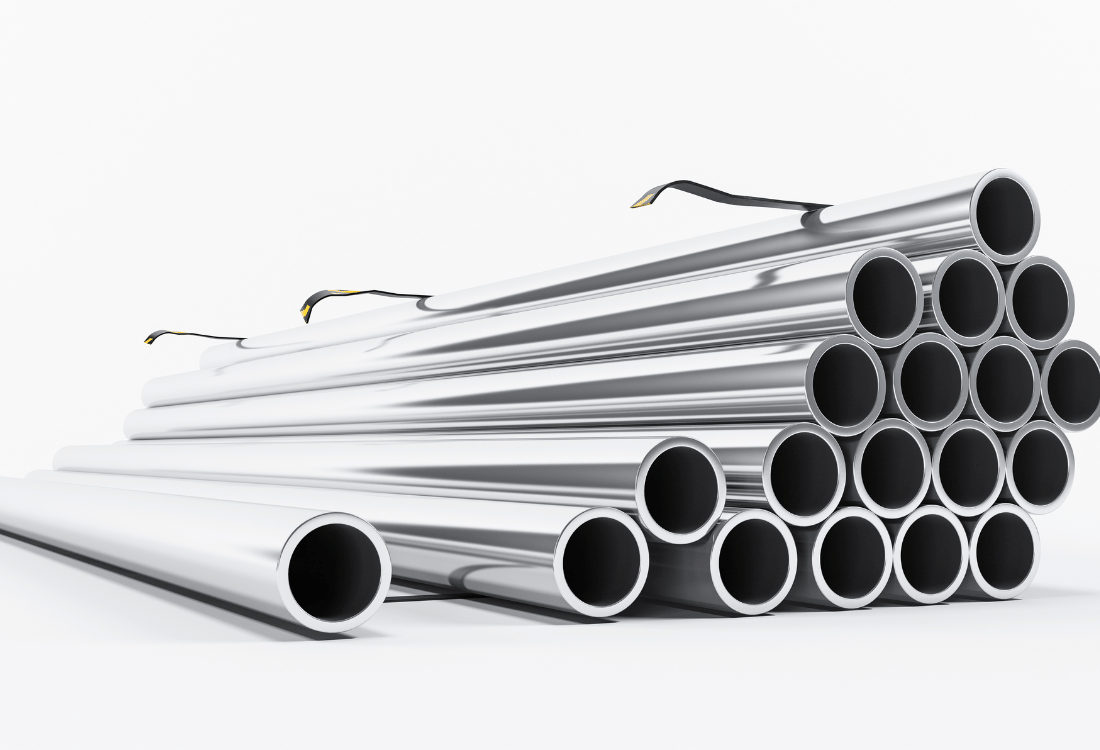The Hidden Threats of Rouge to Stainless Steel
Rouge is a form of corrosion, most commonly found in high-purity water or steam systems in the pharmaceutical manufacturing industry.
cGMP, as defined by the MHRA and FDA, states that corrosion (rust or rouge) must not be present in distribution systems, tanks, vessels or equipment. Rouge can migrate through pipework and contaminate the product being manufactured. Rouge will cause deterioration of the stainless steel surface, in some cases creating an environment where pitting or biofilms can develop.

Efficient Derouging: Safely Targeting Contaminants While Reducing Waste and Disposal Costs
Our derouging process uses Ateco pH neutral chemistry that selectively targets the rouge without removing material from the underlying surface. In many cases, the derouging and passivation chemicals can be discharged directly to the client drainage system, thereby eliminating the storage of hazardous materials and associated disposal costs
The Derouging And Passivation Process
Frequently Asked Questions
Rouge is a catch-all expression to describe the discolouration that forms on stainless steel surfaces – usually in high-purity water or steam systems. The discolouration varies from a pale yellow-orange, through to red-brown and onto a dark violet-black. It is composed of a complicated lattice made up from different iron oxides/hydroxides.
In most cases, rouge is identified during a visual inspection. A discoloured surface, typically yellow- orange-red appears first. Depending on the environment, this could also be a darker red/brown and even purple-black stain. The lighter coloured forms of rouge can often be picked up during swab- testing. In most cases, this will simply discolour the swab. Rouge can not normally be cleaned by simply wiping it off.
Rouge is a form of corrosion. If left untreated, it will spread throughout the system and interfere the formation of the passive film, leaving the stainless exposed to issues such as pitting. Rouge will also increase the surface roughness of the surface, and provide a site for biofilms to adhere.
Rouge will migrate around the system and in the worst case scenario, contaminate your product.
Derouging with Ateco pH neutral products will not damage your equipment or system. Derouging with traditional strong acids (including sulphuric acid, hydrofluoric acid, ammonium bifluoride, nitric acid, etc.) run a high risk of damaging your equipment. These products can etch the surface finish, ruining polished surfaces and significantly reduce the operational life-span of your polymers and elastomers.
Unfortunately, it is likely that rouge will come back. Rouge is an unavoidable consequence of using ultra-pure water/steam in an austenitic stainless steel system. The formation of rouge can be mitigated by the quality of the base material, the quality of the surface finish and a well executed passivation process, but these do not guarantee a rouge-free life.
A planned preventative maintenance program including derouging and passivation will keep rouge at bay, or at the very least, capture it when it is in the very early stages of development. The longer rouge is left to form, the tougher it can be to remove.
This is very subjective and can be affected by many things, including the complexity of the system and severity of the rouge. In most cases, a fairly typical WFI loop and storage vessel can be fully degreased, derouged and passivated within 1 to 2 days.
Derouging with pH neutral products does not etch the surface of stainless steel. The process is designed to target the iron-oxide/hydroxides that form the rouge, leaving the underlying polished surfaces in pristine condition.
Pickling is generally specified when the component needs scale, weld-heat-tint and metallic contamination removing. It etches the surface (and therefore is not suitable for polished finishes). Pickling products contain hydrofluoric acid or ammonium bifluoride. Be very wary if your derouging contractor recommends these products for derouging your pharmaceutical equipment.
Derouging removes tightly adhered corrosion. Passivation removes loosely adhered ferrous contaminants – then helps to reform the chrome-oxide layer.
Passivation is required after derouging.
Speak To An Expert
Submit A Question Or Enquiry And Speak To One Of Our Experts To Find Out More!
Submit an enquiry with your question, to give us a brief or to request a call back from one of our experts.
When you get in touch with INOX:
We'll contact you back as soon as we are able to
We'll always aim to provide 'best advice' for your business
We offer a free initial consultation
Your information is treated in the strictest confidence
You can ask us for advice or help on any or all of the following:
- Passivation
- Derouging
- Oxygen Cleaning
- Biofilm Removal
- Riboflavin Testing
- Pre-Commissioning Flushing
- Carbon Steel Pickling
Simply confirm your details on the form provided and we'll be in touch ASAP. We look forward to hearing from you!
From Our Blog

Benefits Of Stainless Steel Pickling In The Power Generation Industry

Rouge Types: What Are The Three Main Classes Of Rouge?


